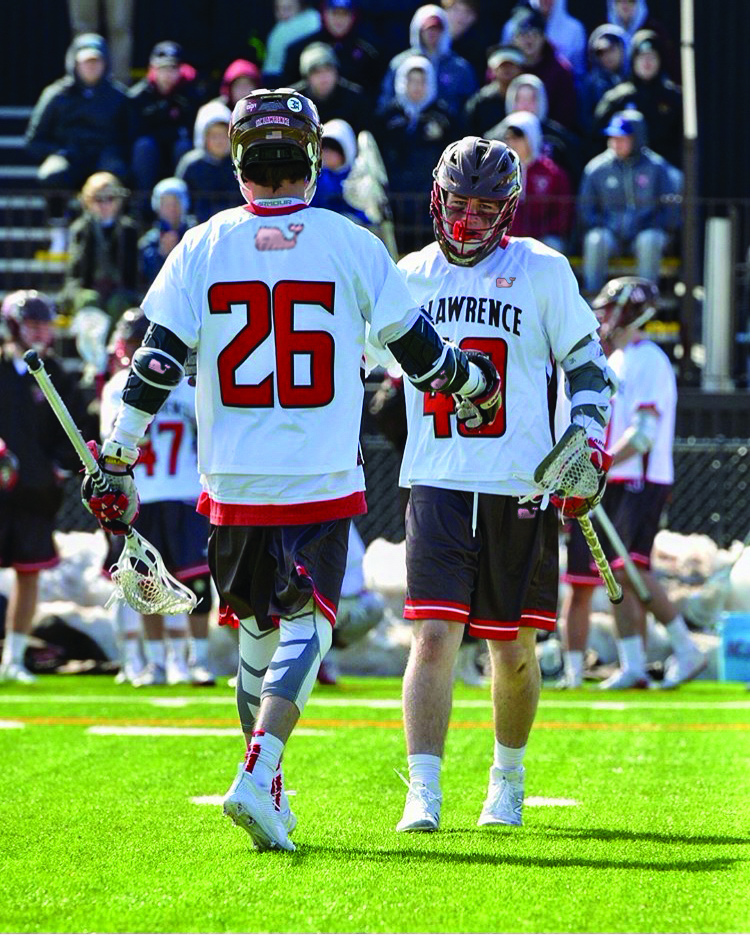When the intrepid journalist Brian Corgi Boonius ’18 was driving back to St. Lawrence at 4 a.m. on Monday, he was driving quickly to make his 10:40 a.m. class. Somewhere in the Adirondacks, he reached a speed so fast that he managed to drive into the future. When he got to school, the year was 2033.
By communicating through his travel-themed food Instagram account, Boonius was somehow able to relay the future state of St. Lawrence to the 2018 editorial board. Here’s an exclusive look at St. Lawrence in 2033.
***
Boonius immediately noticed that St. Lawrence had changed considerably in an attempt to address ongoing budget problems. The school was a staggering $50 million in debt.
In order to tackle the budget shortfalls, St. Lawrence hired the consulting firm Bentz Whaley Flessner to brainstorm ways to make St. Lawrence more attractive and affordable. Based on the firm’s findings, the administration implemented a number of changes.
Instead of being an institution of higher education, St. Lawrence rebranded and is now an institution of higher athletics and cumbersome administration. “We felt that calling St. Lawrence a place of higher education was misleading and at odds with our values,” explained the Co-Assistant VP of Sports Bureaucracy.
To appeal to a wider audience, the school now has 52 varsity sports teams, ranging from water polo to parkour. All the teams’ uniforms are supplied by Vineyard Vines, and an estimated 98 percent of the student body is on a team. The administration declined to tell Boonius the athletic department’s budget, instead citing professor salaries as the major culprit of soaring expenditures.
The comprehensive fee to attend St. Lawrence in 2033 is $111,657, having grown at 3.5 percent a year since 2018. Coincidently, the demographics of St. Lawrence also changed.
In 2033, an estimated 86 percent of St. Lawrence students attended a private high school, while minority representation has plummeted. The administration wondered why only rich, white private-school students were applying, so they added a new golf course, hired three more Deans of Diversity, and issued a new climate survey.
There were also major changes in academics. The english, philosophy, history, and anthropology departments were all merged into one department with four professors. To prepare for the job market, students who major in this new department are required to learn how to become a barista or wait tables. The art department was disbanded in 2026 in order to finance the president’s $1,000,000 annual salary.
Boonius noticed that St. Lawrence had new traditions. For example, at the beginning of every month, students and faculty alike burn effigies of Chris Di Mezzo on the Piskor quad to protest all the structural and cultural problems at St. Lawrence that Di Mezzo was personally responsible for.
Boonius also learned that THN no longer operates. In 2025, a member of the Fappa Fappa Bamma fraternity had his father, who was a powerful lawyer, file a lawsuit against the paper for publishing libelous content.
The global studies department also sued the paper, accusing THN of acts of moral turpitude, racism, genocide, and censorship. Unable to pay the legal fees, THN dissolved and the leftover newspapers, now numbering over two million, are still burned to provide heat for the massive Fappa house.
The Odyssey Online seized upon the moment and is now the most popular news outlet on campus, reaching around 29 people a week.
THN wanted to figure out if conservative students still felt marginalized in 2033, but Boonius forgot to interview SLU Republicans or the head of Young Americans for Liberty. Instead, Boonius got a quote from the head of SLU Democrats: “The notion that conservative students are or were ever marginalized is laughable. In fact, when a conservative student told me that they felt marginalized, I laughed in their face until they stopped talking.”



